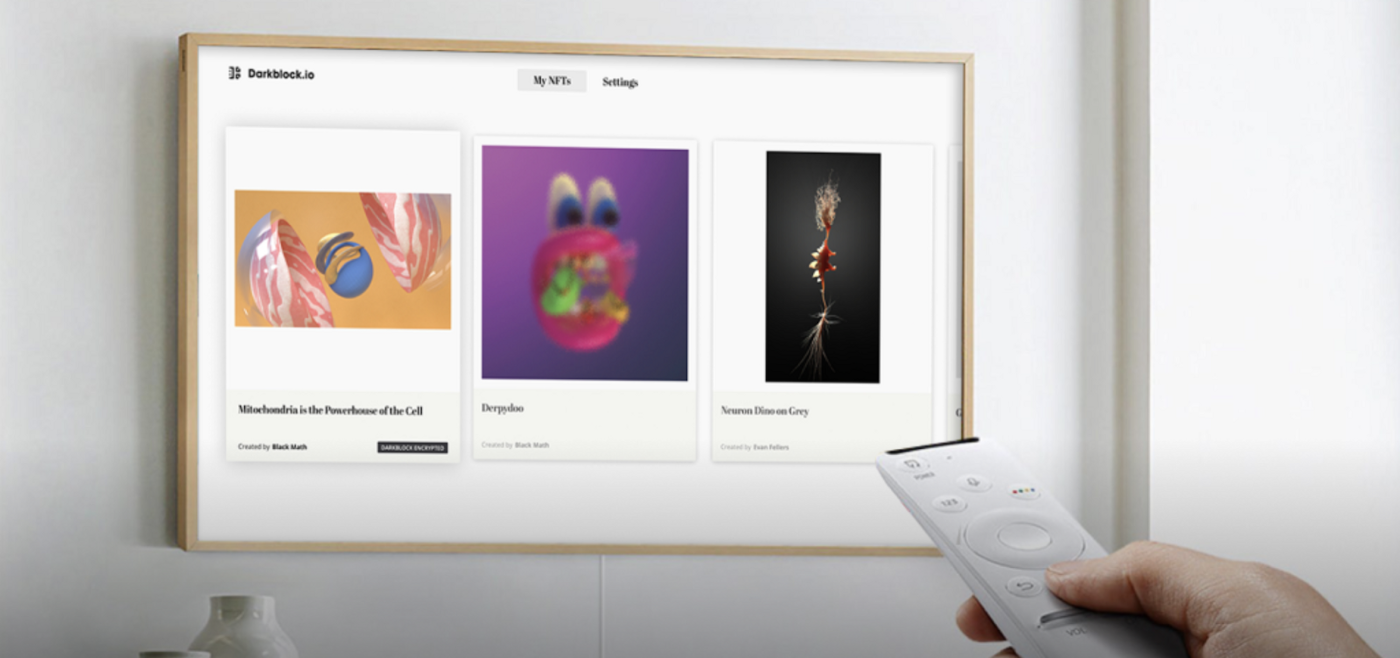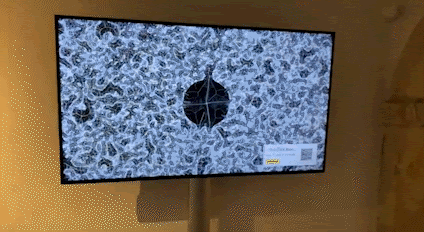Backing Darkblock — a creator & user-driven content access rights management protocol
by Felix Machart, Nov. 10
We are excited to lead the latest $1.7M Seed round in Darkblock together with A&T Capital, with participation by Smape Capital, Unpopular Ventures, Arweave & Julian Lenz.
NFTs are the future of digital content, but a lot of it is open for everyone to view
NFTs (non-fungible tokens) have been increasingly getting attention over the last year as a new frontier in digital ownership. One of the highlights that entered into mainstream consciousness was a digital artwork by Beeple being sold for $69M at traditional auction house Christie’s. Most content that is associated to such tokens can however be copied trivially, while it is widely debated whether the mere ownership of the original instance of a link to a given piece of digital and replicable content is more valuable than any subsequent instance of such (we do think it is — but this is in the end intersubjective).
So far there has not been a solution that securely prevents copying or hiding of NFT content. Reliable rights management and copy protection would enable various opportunities for monetizing premium content including programmable licensing, rentals, and royalties for the creator or owner of the NFT.
A gated Beeple NFT, for example, could be worth $69 million plus the exhibition revenue when the owner rents it out. With the possibility to encode long-term monetization for the artist from the get-go, she can profit from early works even if she doesn’t get famous until late in her career.
In the traditional content distribution value chain there exists Digital Rights Management (DRM) technology, which is highly controversial for the centralization of power with large platforms and publishing houses at the expense of creators and users.
With Web3 on the other hand, we have the opportunity to build a user and creator controlled, decentralized personal rights management protocol that enables the creator to define any terms and conditions of usage and monetization without the reliance on centralized intermediaries.
Enter Darkblock — a creator & user controlled rights management platform
Darkblock enables a user-controlled, decentralized content rights management protocol to prevent piracy and enable a flexible set of sustainable monetization strategies for creators and collectors.
With The decentralized protocol layer creators can attach an encrypted asset to existing NFTs, while the NFT displayed on a marketplace acts as a “thumbnail” to the underlying asset (jpg, mp4, gif..). Only the true owner (or borrower in case an NFT is lent out) is able to decrypt and view the original high-resolution content. Creators can upgrade their NFTs for free on Darkblock’s web app.
Darkblock.io has launched a TV app to view encrypted and other NFTs, which is initially accessible via metamask wallet and a compatible Amazon Fire TV (app link) or Android TV device (app link). A web app will soon be available as well.

Personal rights management (PeRM) vs. digital rights management (DRM)
In order to align incentives with creators and users, Darkblock will set up a community-governed DAO that will over time decide upon new rollouts of software, the ability to embed work on other sites, or what features to apply to content will all be determined by the creators and patrons of the space.

Darkblock will enable new business models
Exclusive access to content in a digital format allows for new business models. One of the most interesting of those is to allow fractional ownership of an artwork, so that individuals can have economic exposure to a piece of art according to their personal financial means and needs for diversification, while the artwork can be rented out for a continuous revenue stream. Not only does this create productive assets out of artworks, but a collective of fraction owners can take turns in displaying the exclusive content (potentially several users can display at the same time, as defined by the creator).

In the future we could see houses full of displays with an ever changing set of digital exclusive pieces of art being exhibited. This could be everything from static content to animations to VR experiences projected onto the walls, which make every inch of real estate part of the artistic metaverse.

Darkblock’s goal is to encourage new types of content to enter the NFT space, including mediums that have so far rejected NFTs as being too open, such as comic books, ebooks, or even full length movies.
Further use-cases encompass anything that can benefit from decentralized access control to content. We have been particularly excited for the potential to disrupt or enhance community-oriented content platforms such as Patreon or OnlyFans, where creators can release limited edition gated content to their fans as NFT collectibles.
Tech
The Darkblock Protocol uses a decentralized network of nodes to control access to digital content associated with NFTs through a proxy-reencryption mechanism.
Currently Ethereum based NFT standards ERC-721 and ERC-1155 are supported, but all major NFT standards (Palm, Flow, Tezos, etc.) are going to be integrated.
The gated content that is embedded in the NFT is encrypted using AES-256 and is placed onto the permanent web storage solution Arweave.
The decryption key is stored on nodes of the Darkblock network. The key will be stored inside a trusted execution environment (TEE) so that node operators are not able to extract the decryption key. Furthermore, the key is stored redundantly on multiple nodes to ensure availability. Going forward, the team will build out a staking model to incentivize the decentralized network of nodes.
The code running in the TEE is fetching the encrypted data from Arweave, decrypts it and if the device, asking for the content, has the permission to do so the node will send over the unencrypted content over an encrypted channel. The latter channel is encrypted to ensure that the content cannot be intercepted. On the device, the TEE will decrypt the communication channel with the unencrypted asset and will in turn show it on the player such as an LCD screen.
Team of tech and design veterans
Working with the team around Chris, Ari and Darri over the last couple of months, a set of experienced tech entrepreneurs, UX designers & marketing people, has convinced us that they are the ones to build this ambitious project.
In addition, creative agency blackmath founders — who are leading a team of 30 designers, turned NFT enthusiasts — are on the founding team, which gives them a major strategic advantage in testing and go-to-market.
Next steps
Darkblock is partnering with existing NFT marketplaces to provide their services. Integration is simple: Darkblock offers an API, implementation suggestions for the frontend of the marketplace, as well as web delivery in order to easily add decentralized unlockable content (Javascript widget that integrates with popular crypto wallets).
The next feature the team is working on is enabling the rental of NFTs to enable new business models around NFT content.
We are super happy to join Darkblock on their journey to build a creator and user controlled content rights management platform.
If this sparked your interest, join the Discord community, the ambassador program, follow them on Twitter & Medium.
